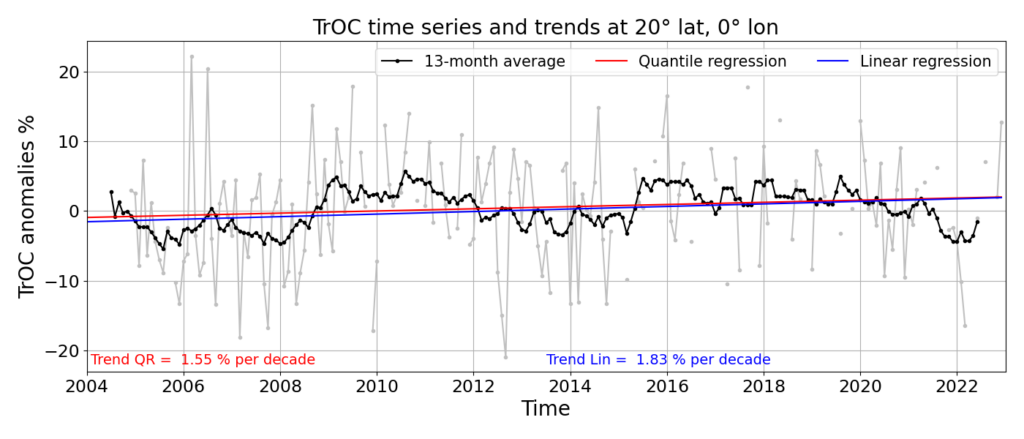The OREGANO Project – A Focus on Tropospheric Ozone and its Long-term Trends
- Project by: Carlo Arosio
- August 8, 2024
The Ozone Recovery from Merged Observational Data and Model Analysis (OREGANO) project has the aim to advance our understanding of ozone recovery using a combination of observations and model analyses. The focus of the present study is on tropospheric ozone and its long-term changes.
Tropospheric ozone is a relevant pollutant harmful for human health and vegetation. Approximately 30% of the tropospheric ozone burden is related to human activity, in particular to the emission of ozone precursors, such as NOx, in combination with the presence of volatile organic compounds and intense sunlight.
At the University of Bremen a long-term tropospheric ozone column (TrOC) data set was produced by merging the observations from two sensors: SCIAMACHY and OMPS. The technique employed is called limb-nadir matching, as it combines the stratospheric information provided by limb measurements with the total column observed in nadir geometry to obtain the TrOC as residual.
This study aims first at comparing this merged time series with other available products. Then, causal links between precursors and ozone concentration as observed from satellite data will be investigated. Finally, another point of interest is related to long-term TrOC changes, with a focus on the relevant variables (proxies) that shall be included in the regression model to compute trends.
The first part of the project carried out between Bremen and ESRIN, with the involvement of other research groups, is focused on the inter-comparison of several limb-nadir matched tropospheric ozone column data sets. These products are obtained either by combining pure observational data, such as OMI-MLS and GTO-LIMB, or complementing nadir observation with model data for the stratospheric column, such as EPIC-MERRA and S5P-BASCOE. An example of tropospheric ozone climatology from several data sets in summer (JJA) is displayed in Fig. 1. A common feature is the wave-1 pattern observed in the tropics, with minimum ozone located in the Indonesian and Pacific sectors, and maxima in the tropical Atlantic.

In addition, the aim of the project is also the study of TrOC trends and the need for proxies to better capture the long-term ozone changes. Other than traditionally employed proxies such as the Quasi-Biennial Oscillation (QBO) and El-Nino Southern Oscillation, we want to investigate the importance of ozone precursors as proxies. Fig. 2 shows an example of TrOC time series with trends computed using both a linear model and the quantile regression approach.

This research is carried out by Carlo Arosio.
Read more
- Ozone Recovery from Merged Observational Data and Model Analysis (OREGANO)
- SCanning Imaging Absorption spectroMeter for Atmospheric CartograpHY (SCIAMACHY)
- OMPS – Ozone Mapping and Profiler Suite
- Intercomparison of tropospheric ozone column datasets from combined nadir and limb satellite observations – ESA Science Hub

